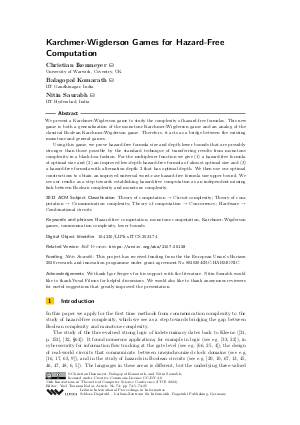LIPIcs.ITCS.2023.74.pdf
- Filesize: 0.78 MB
- 25 pages

 Creative Commons Attribution 4.0 International license
Creative Commons Attribution 4.0 International license
































Feedback for Dagstuhl Publishing